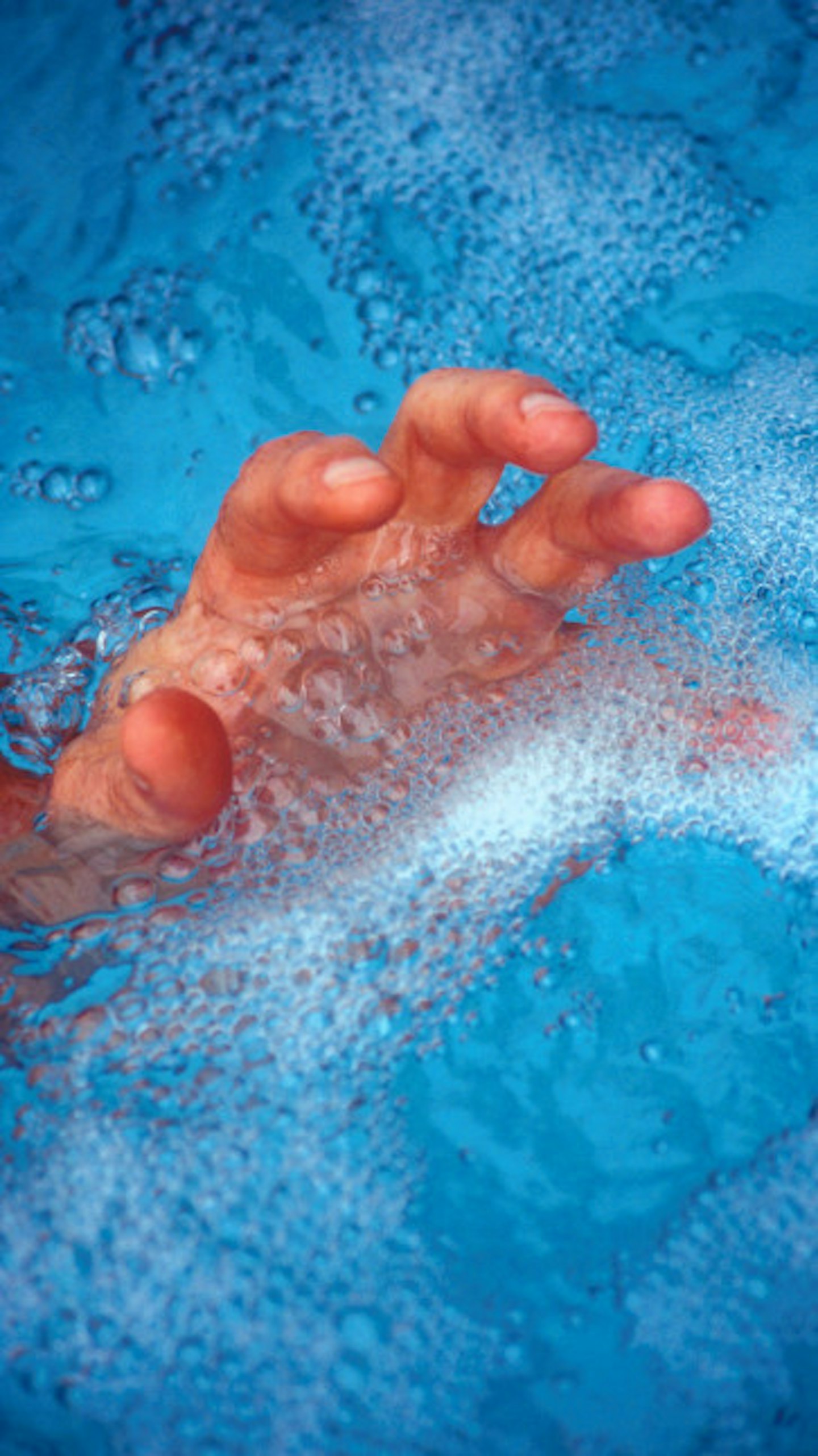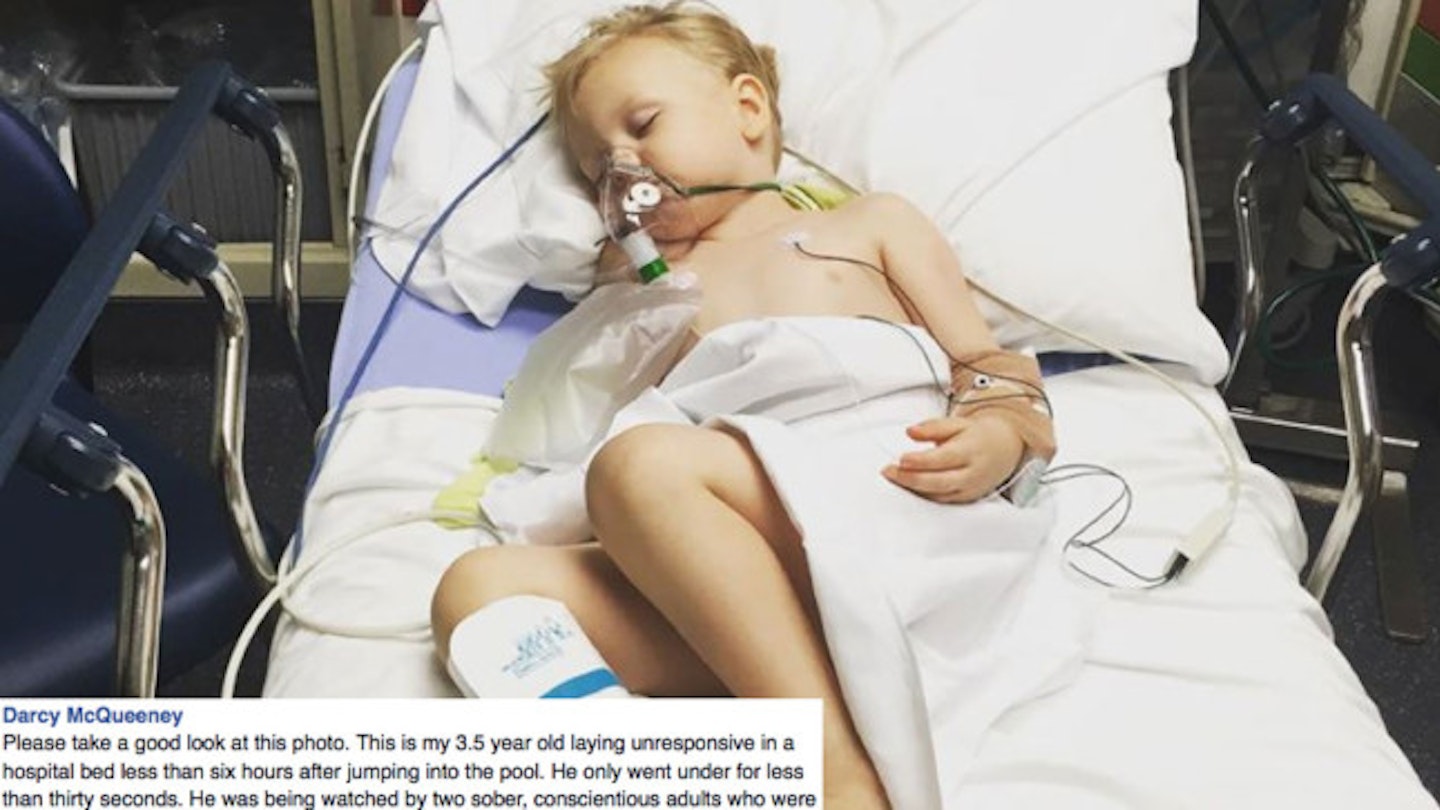A dip in a swimming pool is a fun way for families to stay cool and stay active on a hot summer’s day.
But, as we all know, it can be dangerous, too.
Drownings in children can occur in less than 30 seconds and in less than half an inch of water, making the need to closely and constantly monitor children in the water common knowledge.
But what if your child has a near-drowning experience or gulps a bit too much water after an unexpected dip? They’re OK, right?
Well, while they might seem that way at first, they could be in serious danger of secondary drowning.
Darcy McQueeny has taken to Facebook to warn parents about the rare, but potentially fatal, condition after her toddler son was hospitalised.
He had fallen underwater for less than thirty seconds, and had been quickly pulled to safety by two responsible adults.

For the next few hours, he seemed completely fine - but then things took a horrific turn for the worst
The traumatised mother wrote on the social networking site: “Please take a good look at this photo. This is my 3.5 year old laying unresponsive in a hospital bed less than six hours after jumping into the pool.
“He only went under for less than thirty seconds. He was being watched by two sober, conscientious adults who were both less than ten feet away in a gated pool.
“That is likely why he is alive, because he was grabbed out of the water quickly.”
“He was talking and even eating after the incident, but went downhill hours later"
Darcy continued: “However, that small blip of time was all it took for him to inhale water.
“The water he inhaled caused him to spike a fever, desat [sic], and become unresponsive due to a possible seizure.
“He was talking and even eating after the incident, but went downhill hours later.
“Everyone who we met in the PICU remarked at how incredibly lucky he is to be alive. Not only because he didn't drown initially, but because he was at a gigantic risk for secondary drowning.
“Despite him being able to eat and talk and seeming like he was ok after the incident, he was NOT ok. Water safety should be a top priority for everyone.”
Please take a good look at this photo. This is my 3.5 year old laying unresponsive in a hospital bed less than six hours... > >
Posted by [Darcy McQueeney](#) on [Saturday, 15 August 2015](https://www.facebook.com/photo.php?fbid=10155916654670150&set=p.10155916654670150&type=1)
She finished on a stark warning, writing: “Do not ever leave children unattended near any source of water. Even following all of the rules, accidents happen.
“Even if they are acting ok after near drowning, please take them to the hospital. What if we had assumed he was ok and put him to bed?
“I don't know how to stress this enough. His PICU nurse asked us to please use our experience to spread awareness.
“My son shocked everyone by bouncing back at record speed and is okay, but he is fortunate.
“Please spread awareness about how important it is to take water safety seriously, including after care for near drowning.”
Thankfully Darcy’s son made a speedy recovery, but secondary drowning can be fatal if warning symptoms are ignored.
Here’s what to look out for:
Remember - symptoms can take between one and 72 hours to appear, so keep a watchful eye on your little one if they have had a near-drowning, or perhaps swallowed too much water.
